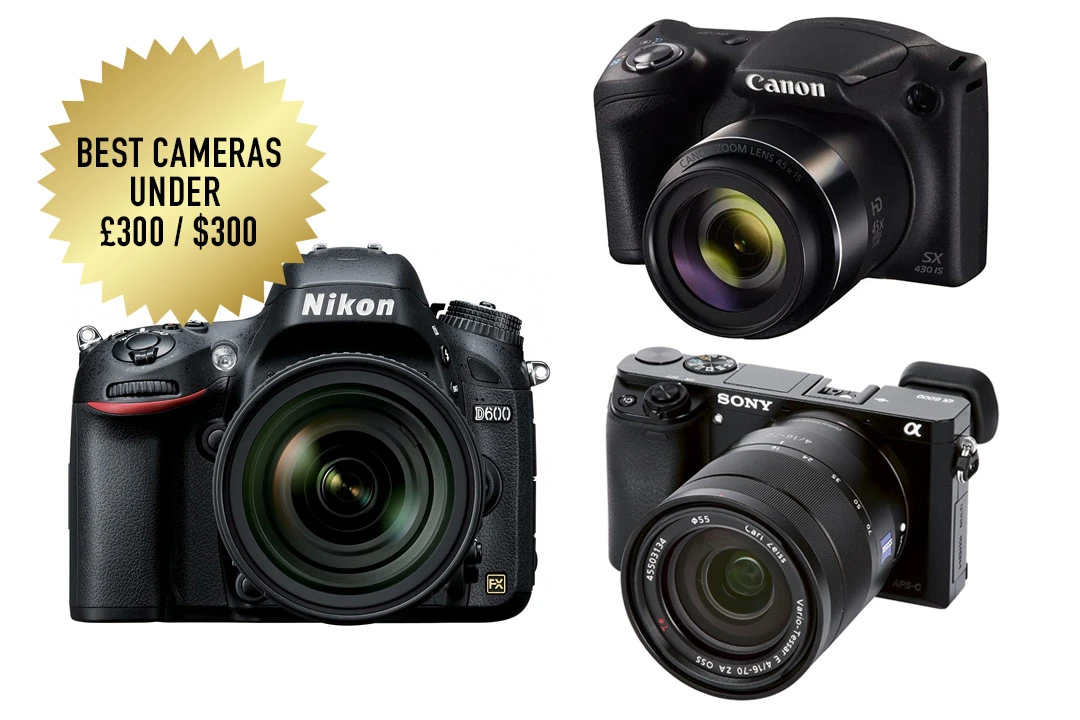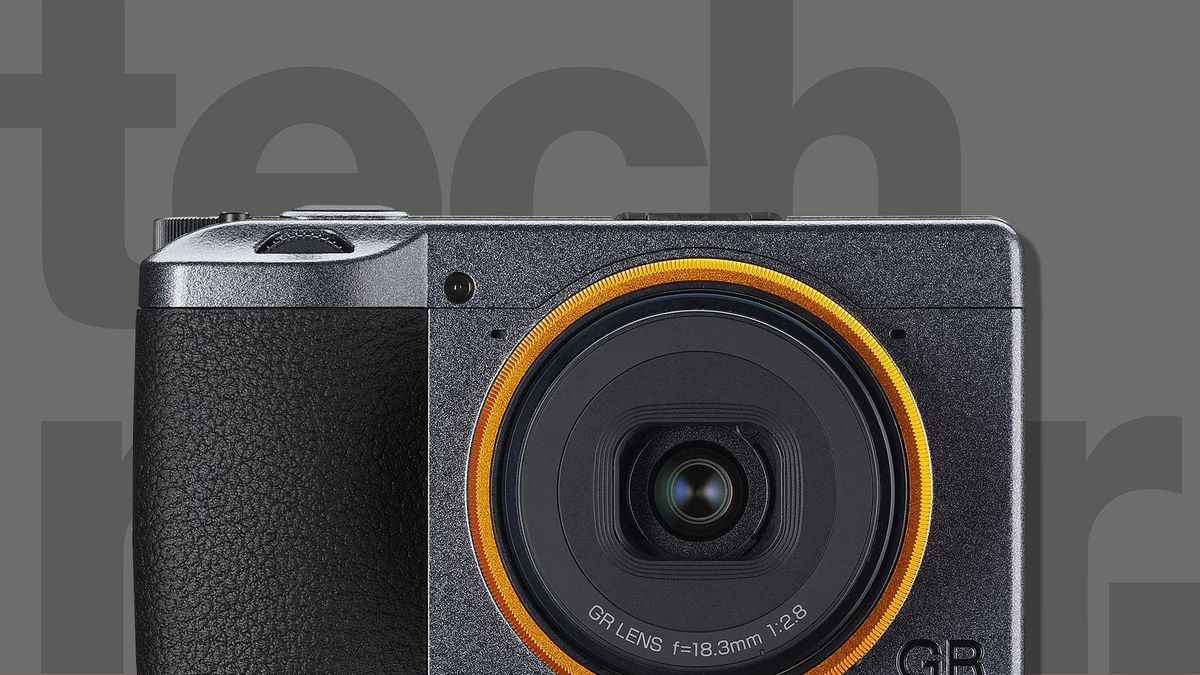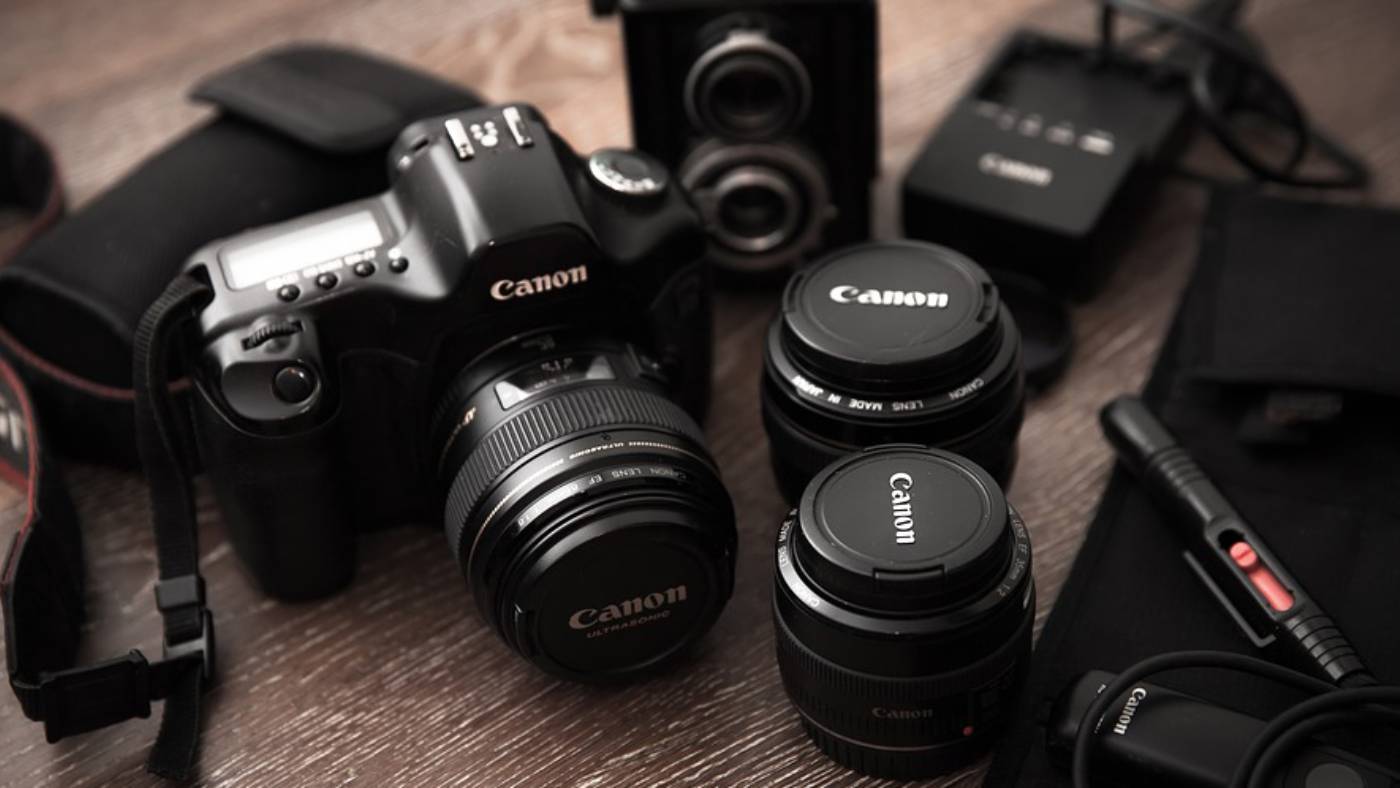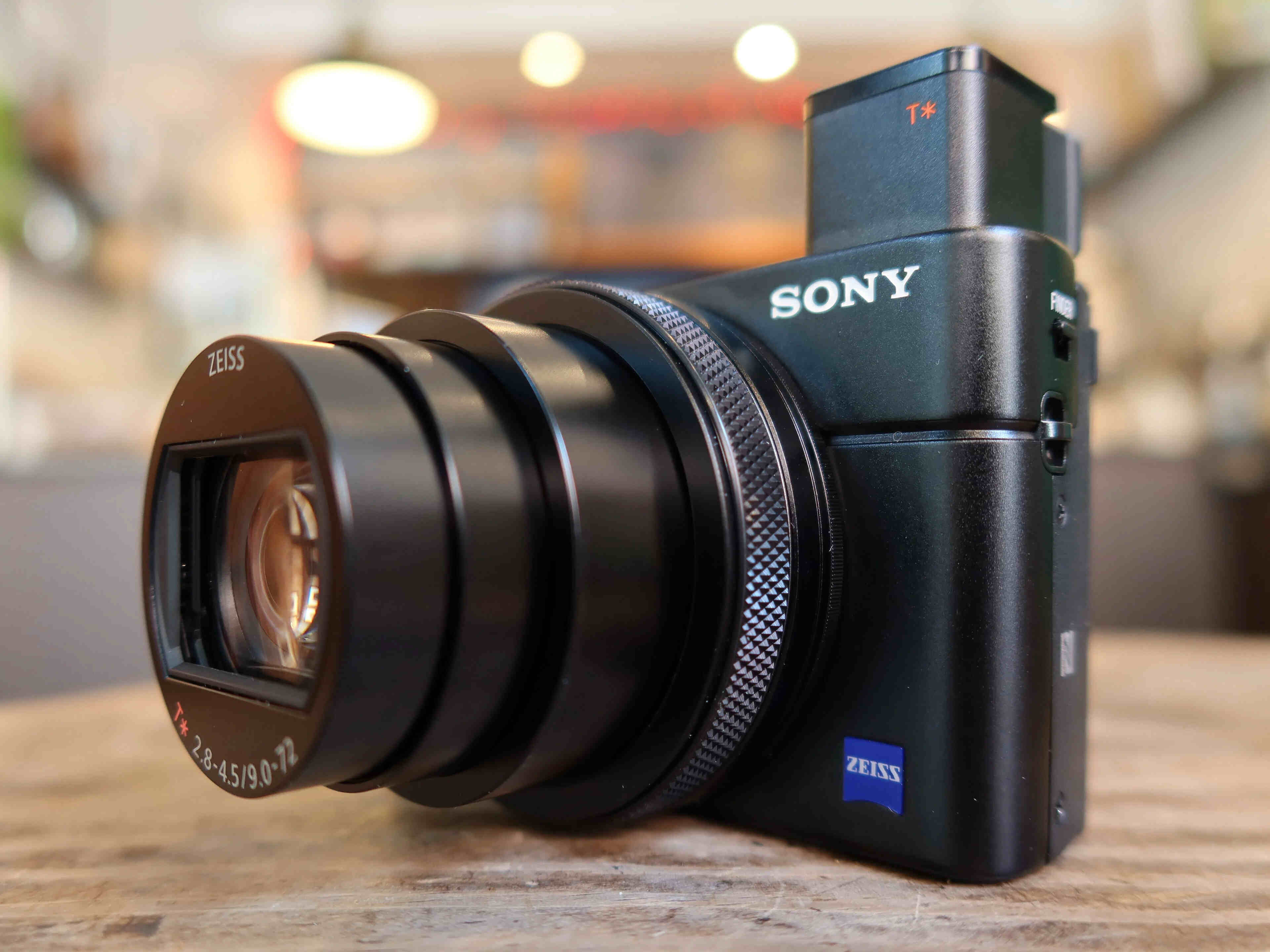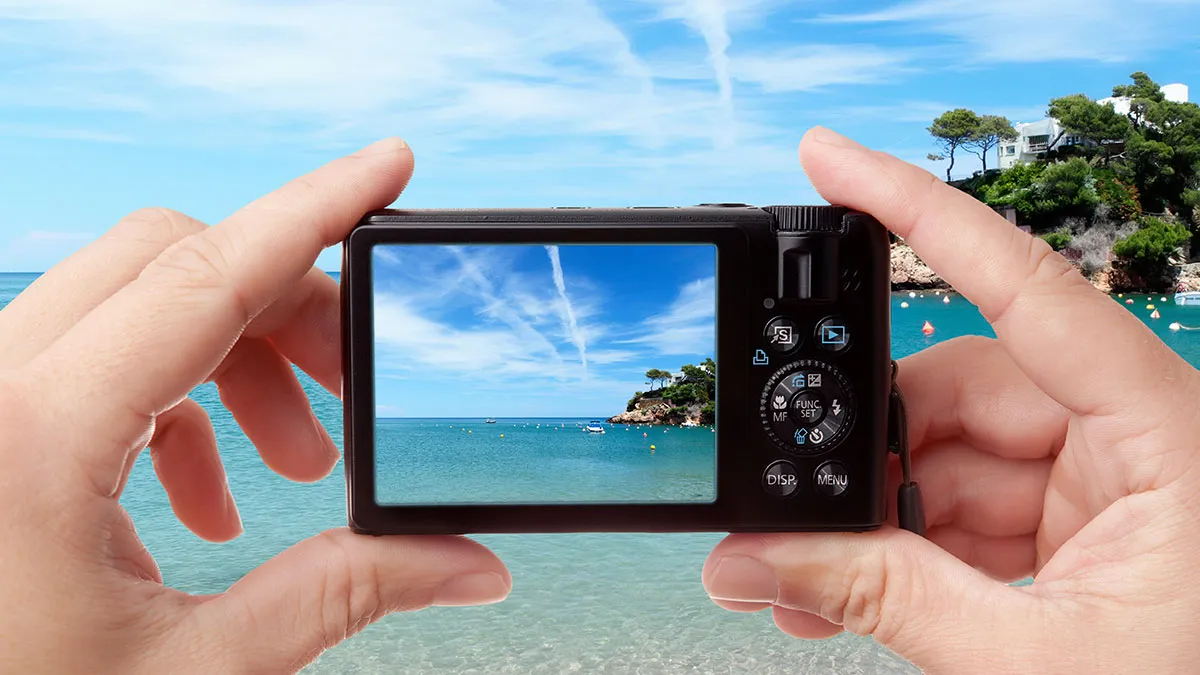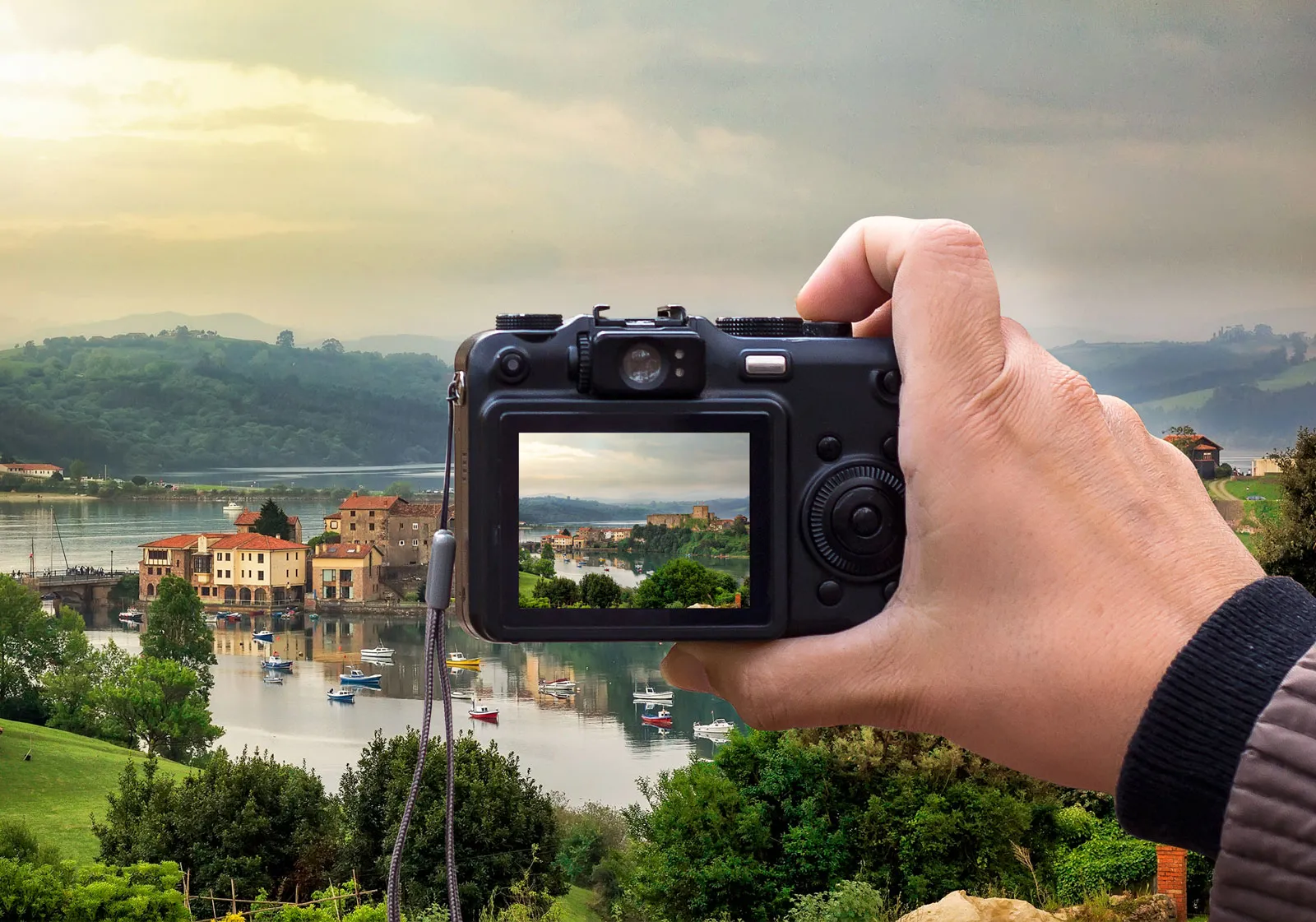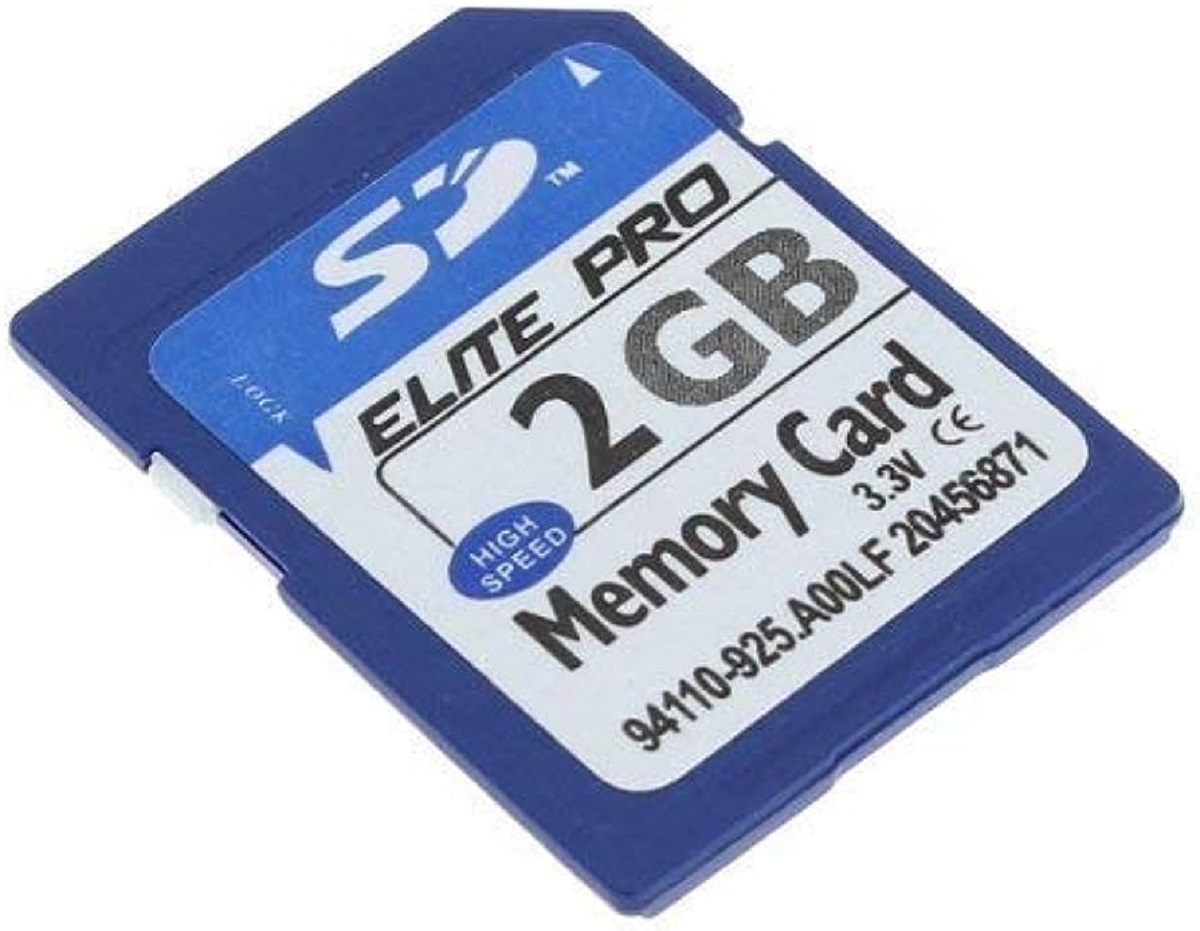Introduction
When it comes to capturing memories and taking stunning photographs, a digital camera is an essential tool for any photography enthusiast or casual user. With the ever-evolving advancements in technology, choosing the right digital camera can be a challenging task. From compact cameras to DSLRs, mirrorless cameras to point-and-shoots, bridge cameras to action cameras, and even smartphone cameras – there is a vast array of options available on the market.
Whether you are a beginner or a professional photographer, finding the perfect digital camera that suits your needs and preferences is crucial. Factors such as budget, intended use, image quality, portability, and versatility all play a significant role in determining which camera is the best fit for you.
In this article, we will explore the various types of digital cameras available in the market and dive into the features and benefits of each category. By understanding these differences, you will be better equipped to make an informed decision and choose the ideal digital camera for your photography needs.
Whether you enjoy capturing landscapes, portraits, action shots, or simply want a versatile camera for everyday use, there is a camera out there that can meet your requirements. So, let’s dive into the world of digital cameras and discover which one suits your style and budget!
Factors to consider when choosing a digital camera
Before diving into the different types of digital cameras, it’s important to consider a few crucial factors that should influence your decision. By evaluating these factors, you can narrow down your choices and find a camera that meets your specific requirements:
- Budget: Determine how much you are willing to spend on a digital camera. Prices can vary greatly depending on the type and brand of the camera.
- Intended use: Consider how you plan to use the camera. Are you a professional photographer looking for advanced features, or are you a casual user capturing everyday moments?
- Image quality: Assess the camera’s image quality, including resolution, dynamic range, and low-light performance. Higher megapixels and larger image sensors generally result in better image quality.
- Portability: Decide if you need a camera that is compact and lightweight for easy transportation, or if you prefer a larger camera with more advanced features.
- Versatility: Determine the level of versatility you require from the camera. Some cameras offer interchangeable lenses and manual controls, while others are more point-and-shoot style.
- Features: Consider the specific features that are important to you, such as image stabilization, autofocus capabilities, video recording options, and connectivity features like Wi-Fi or Bluetooth.
- User-friendly interface: Evaluate the camera’s menu system and overall ease of use. A camera with a user-friendly interface can make your photography experience more enjoyable.
- Brand and reliability: Research the reputation and reliability of different camera brands. Established brands often have a wide range of lenses and accessories available.
By taking these factors into account, you can narrow down your options and find a digital camera that aligns with your needs and preferences. Remember, there is no one-size-fits-all solution when it comes to cameras, so it’s important to find the right balance of features and affordability.
Compact cameras
Compact cameras, also known as point-and-shoot cameras, are popular among casual photographers and travelers due to their small size and simplicity. These cameras are designed for convenience and ease of use, making them a great choice for those who want to capture everyday moments without the need for advanced photography skills.
Compact cameras are typically equipped with built-in lenses that offer a wide zoom range, allowing users to capture both wide-angle shots and close-up details. They are also known for their automatic settings, including autofocus and exposure control, which make them user-friendly for beginners.
While compact cameras may lack the versatility and image quality of more advanced cameras, they do offer some advantages. Their compact size allows for easy portability, fitting comfortably in a pocket or purse. They are also relatively affordable compared to other camera types, making them a budget-friendly option.
In recent years, compact cameras have undergone significant improvements in image quality. Many models now feature high-resolution sensors and advanced image processing capabilities, resulting in sharper and more vibrant images. Some compact cameras also offer manual controls and creative shooting modes for users who want to explore more advanced photography techniques.
However, it is important to note that compact cameras have their limitations. Due to their small sensor size, they may not perform well in low-light conditions and may struggle with capturing fast-moving subjects. Additionally, their fixed lenses may limit your ability to achieve certain types of shots, such as those requiring extreme telephoto or wide-angle perspectives.
In summary, compact cameras are an excellent choice for casual photographers and travelers who prioritize convenience and portability. They are ideal for capturing everyday moments and offer improved image quality and manual control options. While they may have limitations in low-light and certain shooting scenarios, they provide a user-friendly and affordable photography solution.
DSLR cameras
DSLR (Digital Single-Lens Reflex) cameras are favored by professional photographers and serious enthusiasts due to their exceptional image quality, versatility, and advanced features. These cameras use a mirror and prism system to reflect light into an optical viewfinder, giving users a direct and real-time preview of the scene.
One of the key advantages of DSLRs is their ability to interchange lenses, allowing photographers to choose the perfect lens for each photographic situation. From wide-angle lenses for landscape shots to telephoto lenses for capturing distant subjects, the range of available lenses gives photographers unparalleled creative control and flexibility.
DSLR cameras also boast larger image sensors compared to compact cameras, resulting in superior image quality with better dynamic range, low-light performance, and less noise. This makes DSLRs the go-to choice for professional photography, especially in situations that demand high image quality, such as weddings, portraits, and commercial shoots.
In addition to their excellent image quality, DSLR cameras offer a wide range of manual controls, giving photographers total control over settings such as aperture, shutter speed, and ISO. This level of control allows for precise adjustments, resulting in more creative and unique shots.
DSLRs also excel in terms of autofocus performance, offering advanced autofocus systems with multiple focus points and fast tracking capabilities. This makes them ideal for capturing fast-paced action, sports, and wildlife photography, where quick and accurate focus acquisition is crucial.
However, DSLR cameras are larger and bulkier compared to other camera types, making them less portable. Additionally, the learning curve for mastering the various manual controls and settings may be steep for beginners. Furthermore, the cost of DSLR cameras and additional lenses can be significantly higher compared to other camera options.
In summary, DSLR cameras are the top choice for professional photographers and photography enthusiasts who prioritize image quality, versatility, and creative control. With their interchangeable lenses, superior image sensors, and advanced features, DSLRs are capable of capturing stunning images in a wide variety of genres and shooting situations, including sports, portraits, and landscapes. While they may be bulkier and more expensive compared to other camera options, DSLRs provide unparalleled image quality and flexibility for those who are willing to invest the time and resources into honing their photographic skills.
Mirrorless cameras
Mirrorless cameras have gained popularity in recent years as a lightweight and versatile alternative to DSLR cameras. As the name suggests, these cameras do not have a mirror or optical viewfinder mechanism found in DSLRs. Instead, they use an electronic viewfinder or the camera’s LCD screen to preview the image.
One of the key advantages of mirrorless cameras is their compact size and lightweight design. By eliminating the bulky mirror and prism system, these cameras are much smaller and more portable than DSLRs, making them an excellent choice for travel and street photography where convenience is crucial.
Despite their compact size, mirrorless cameras are equipped with high-quality image sensors that rival those found in DSLRs. This allows for excellent image quality, with great dynamic range, low-light performance, and impressive detail. Mirrorless cameras often utilize advanced autofocus systems that utilize phase detection or hybrid autofocus technology, resulting in fast and accurate focusing on subjects.
Another advantage of mirrorless cameras is their silent shooting mode. Without the mechanical mirror mechanism found in DSLRs, mirrorless cameras offer completely silent shooting, making them a preferred choice for photographers who need to remain discreet, such as during weddings or wildlife photography.
One of the standout features of mirrorless cameras is their ability to utilize the electronic viewfinder (EVF) or LCD screen for real-time preview and live histogram display. This allows photographers to see exactly how the image will look before capturing it and make precise exposure adjustments on the spot.
Furthermore, many mirrorless camera systems offer a wide range of lenses, although not as extensive as the options available for DSLRs. However, adapters are available that allow you to use DSLR lenses on mirrorless bodies, providing even more versatility and compatibility.
While mirrorless cameras offer numerous advantages, they do have a few drawbacks. One common concern is their relatively shorter battery life compared to DSLRs, due to the constant power required to operate the electronic viewfinder and LCD screen. Additionally, some photographers may find the electronic viewfinder less satisfying and prefer the optical viewfinders found in DSLRs.
In summary, mirrorless cameras are a fantastic choice for photographers who prioritize portability, excellent image quality, and advanced features. Their compact size, high-quality image sensors, fast autofocus, and real-time preview make them ideal for various genres, including street photography, travel, and everyday shooting. While they may have shorter battery life and lack the extensive lens options of DSLRs, mirrorless cameras offer a compelling alternative for photographers looking for a lightweight yet powerful camera system.
Point-and-shoot cameras
Point-and-shoot cameras, also known as compact cameras, are designed for simplicity and ease of use. These cameras are perfect for casual photographers who want a straightforward and convenient solution for capturing everyday moments without dealing with complicated settings or interchangeable lenses.
One of the key advantages of point-and-shoot cameras is their compact size and portability. They are small enough to fit in a pocket or purse, making them ideal for capturing spontaneous shots while on the go. Additionally, point-and-shoot cameras are often equipped with a fixed zoom lens, offering a versatile focal range that covers most everyday shooting scenarios.
Point-and-shoot cameras excel in their simplicity and automatic settings. They are designed to make photography accessible to everyone, regardless of their level of experience. These cameras typically offer various shooting modes, including auto, scene modes, and even intelligent auto modes that can automatically analyze the scene and adjust settings accordingly.
With technological advancements, point-and-shoot cameras have also improved their image quality in recent years. Many models now feature higher megapixels, improved sensors, and enhanced image processing capabilities, resulting in sharper and more detailed images. However, it’s important to note that point-and-shoot cameras may not match the image quality of higher-end cameras like DSLRs or mirrorless cameras.
Another key advantage of point-and-shoot cameras is their affordability. They are generally more budget-friendly compared to other camera types, making them a cost-effective option for casual photographers or those just starting in photography.
While point-and-shoot cameras offer convenience and simplicity, they do have limitations. Due to their small sensors, they may not perform as well in low light conditions or produce the same level of detail as larger sensor cameras. Additionally, point-and-shoot cameras may have limited manual control options, making it more challenging to adjust settings for specific creative effects.
In summary, point-and-shoot cameras are an excellent choice for casual photographers who prioritize convenience, portability, and simplicity. They offer a compact size, automatic settings, and a fixed zoom lens, making them ideal for capturing everyday moments. While they may have limitations in image quality and manual control, point-and-shoot cameras provide an accessible and affordable entry point into the world of photography.
Bridge cameras
Bridge cameras, also known as superzoom or advanced compact cameras, bridge the gap between compact cameras and DSLRs. These cameras offer a versatile zoom range, advanced features, and improved image quality, making them a popular choice for those who want more flexibility than a basic point-and-shoot camera but do not want the complexity of interchangeable lenses.
One of the standout features of bridge cameras is their impressive zoom capabilities. They typically feature a fixed lens with a wide zoom range, allowing users to capture a variety of subjects, from wide-angle landscapes to distant wildlife. The zoom range on bridge cameras can often exceed what is possible with interchangeable lenses on DSLRs or mirrorless cameras.
Bridge cameras also offer a range of manual controls, allowing users to fine-tune settings such as aperture, shutter speed, and ISO for more creative control over their shots. This makes them suitable for photographers who want to experiment with different exposure settings and achieve unique effects.
In terms of image quality, bridge cameras have larger sensors than compact cameras, resulting in improved dynamic range and low-light performance. While they may not match the image quality of DSLRs or mirrorless cameras with larger sensors, bridge cameras can produce high-quality images that are suitable for various printing and digital sharing purposes.
Additionally, bridge cameras often feature advanced autofocus systems, fast burst shooting modes, and image stabilization technology, allowing for sharp and steady shots even in challenging shooting conditions.
Bridge cameras also typically provide an electronic viewfinder (EVF) in addition to an LCD screen. This EVF offers a real-time preview of the image, making it easier to compose shots in bright light or when shooting at odd angles.
However, it’s important to note that bridge cameras do have their limitations. Due to their all-in-one design, they can be bulkier and less portable than compact cameras. Additionally, while the zoom range is impressive, the image quality at the extreme ends of the zoom range may not be as sharp as at the mid-range.
In summary, bridge cameras are a great choice for enthusiasts who desire a versatile camera with advanced features and a wide zoom range. They offer a balance between the simplicity of compact cameras and the versatility of DSLRs or mirrorless cameras. With their impressive zoom capabilities, manual controls, and improved image quality, bridge cameras provide a convenient all-in-one solution for capturing a wide range of subjects and photography styles.
Action cameras
Action cameras are specifically designed to capture dynamic and fast-paced activities, making them the perfect choice for adrenaline junkies, sports enthusiasts, and anyone who wants to document their adventures. These compact and rugged cameras are built to withstand extreme conditions and deliver high-quality footage from unique perspectives.
One of the main advantages of action cameras is their small and lightweight design. They are typically small enough to be attached to helmets, handlebars, or even your body using various mounting accessories. This allows for hands-free shooting and provides an immersive point of view, capturing the action from the perspective of the person involved.
Action cameras excel in their ability to record high-resolution videos with excellent frame rates. Many models offer the option to shoot in 4K resolution, ensuring sharp and detailed footage. They also offer features like slow-motion recording, time-lapse, and burst modes, making it easy to create captivating and unique videos.
One of the defining features of action cameras is their robustness and durability. They are designed to withstand harsh environments, including extreme temperatures, water, and impacts. Many action cameras are also water-resistant or even waterproof without the need for an extra housing, allowing for underwater adventures without worry.
In addition to their video capabilities, action cameras often have built-in still photography modes, allowing users to capture high-quality photos while in action. However, it’s essential to note that the image quality may not match that of dedicated still cameras due to the nature of their compact design and small sensors.
Action cameras are known for their wide-angle lenses, which provide a wide field of view. This allows for capturing more of the scene, perfect for capturing landscapes or action shots where the subject is close and moving quickly.
With built-in Wi-Fi or Bluetooth connectivity, action cameras make it convenient to transfer footage and photos directly to a smartphone or tablet for instant sharing on social media platforms. This instant sharing capability is a key feature for those who want to share their action-packed moments with friends and family.
While action cameras offer many benefits for capturing adventure, it’s important to note that their limited zoom capabilities and smaller sensors may not be ideal for traditional photography genres. Additionally, they may lack some advanced features like manual controls found in other camera types.
In summary, action cameras are the perfect choice for capturing adrenaline-filled activities and adventure sports. They offer compact and rugged designs, excellent video quality, and wide-angle perspectives that provide an immersive and dynamic experience. While not suitable for all photography genres, action cameras excel in their ability to capture thrilling moments from unique angles, making them a must-have for active individuals looking to document their exciting escapades.
Smartphone cameras
Smartphone cameras have revolutionized the world of photography, making it easier than ever for anyone to capture high-quality images and videos directly from their mobile devices. The advancements in smartphone camera technology have made them a popular choice for everyday photography, social media sharing, and even professional work.
One of the biggest advantages of smartphone cameras is their convenience and portability. Most people carry their smartphones with them at all times, allowing for quick and spontaneous photography opportunities. With a smartphone camera, you don’t need to carry around an additional device, as everything you need is right in your pocket or purse.
Smartphone cameras have significantly improved in image quality over the years. With high megapixel counts, advanced image sensors, and sophisticated image processing software, smartphones can capture sharp, vibrant, and detailed photos. Many smartphones now offer features such as optical image stabilization, HDR (High Dynamic Range) capabilities, and night mode, allowing for better low-light performance and stunning results in challenging lighting conditions.
Most smartphone cameras also provide a variety of shooting modes and editing features directly within the camera app. This allows users to experiment with different effects, filters, and adjustments, enhancing their creativity and enabling them to produce professional-looking photos without the need for additional editing software.
Another advantage of smartphone cameras is their connectivity and sharing capabilities. With a smartphone camera, you can instantly share your photos and videos on social media platforms, send them to friends and family, or upload them directly to cloud storage services. The built-in wireless connectivity also allows for seamless integration with other devices and accessories, such as wireless printers or external lenses.
While smartphone cameras offer many benefits, they do have limitations. Due to their compact size, they have smaller sensors compared to dedicated cameras, which can result in reduced dynamic range and low-light performance. Additionally, their fixed lenses may be more limited in terms of zoom capabilities and focal length options compared to interchangeable lens cameras like DSLRs or mirrorless cameras.
However, smartphone cameras continue to improve with each new generation of devices. Manufacturers are constantly investing in research and development to enhance the image quality, add new features, and push the boundaries of what is possible with smartphone photography.
In summary, smartphone cameras have transformed the way we capture and share moments. They provide convenience, portability, and impressive image quality, making professional-looking photography accessible to everyone. With their extensive features, photo editing capabilities, and seamless sharing options, smartphone cameras are the go-to choice for everyday photography and social media sharing.
Conclusion
Choosing the right digital camera is a decision that should be based on your specific needs, preferences, and budget. The market offers a wide range of options, each with its own strengths and limitations. By considering factors such as image quality, portability, versatility, and intended use, you can narrow down your choices and find the perfect camera to suit your photography style.
If you prioritize convenience and simplicity, compact cameras or point-and-shoot cameras are excellent choices. They are compact, easy to use, and offer automatic settings that make them ideal for casual users or travel photography.
For those who seek more advanced features, manual control options, and superior image quality, DSLR or mirrorless cameras are worth considering. These cameras provide versatility, interchangeable lenses, and excellent image sensors, making them the top choice for professional photographers and enthusiasts.
Bridge cameras offer a balance between the simplicity of compact cameras and the versatility of DSLRs or mirrorless cameras. With their impressive zoom capabilities and advanced features, they are great for photographers who want the convenience of an all-in-one camera with more creative control.
Action cameras are the perfect companions for capturing fast-paced and extreme activities. They offer ruggedness, compactness, and impressive video capabilities, making them ideal for documenting thrilling adventures and outdoor sports.
Lastly, smartphone cameras have become increasingly powerful and have become the go-to option for everyday photography and social media sharing. With their convenience, connectivity, and improving image quality, smartphone cameras are accessible to everyone and a great choice for capturing moments on the go.
Ultimately, the best digital camera for you depends on your individual preferences, intended use, and budget. With the vast array of options available, there is a camera out there to suit every photographer’s needs. Whether you are a beginner, an enthusiast, or a professional, taking the time to research and compare different models will help you find the perfect digital camera to bring your photographic vision to life.










